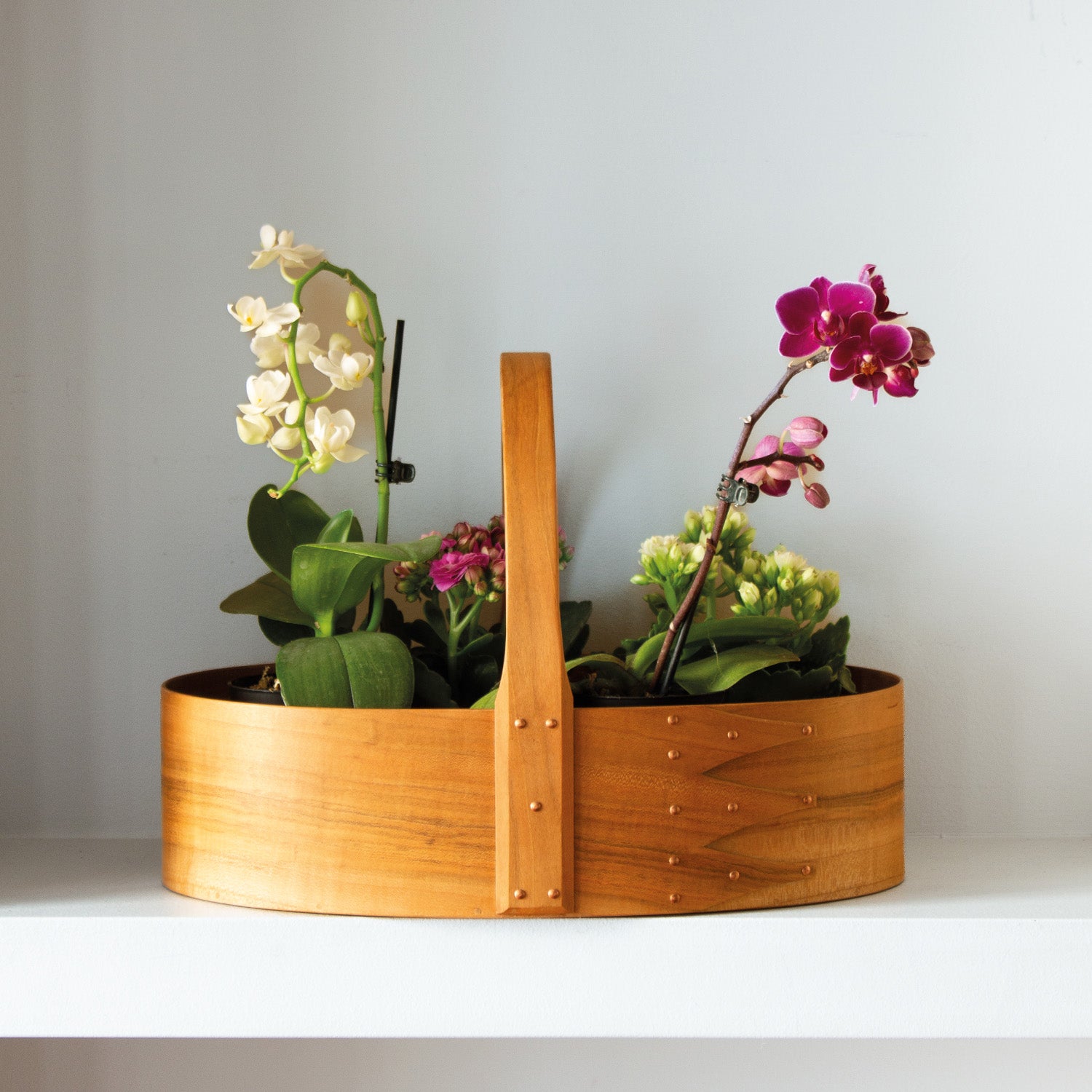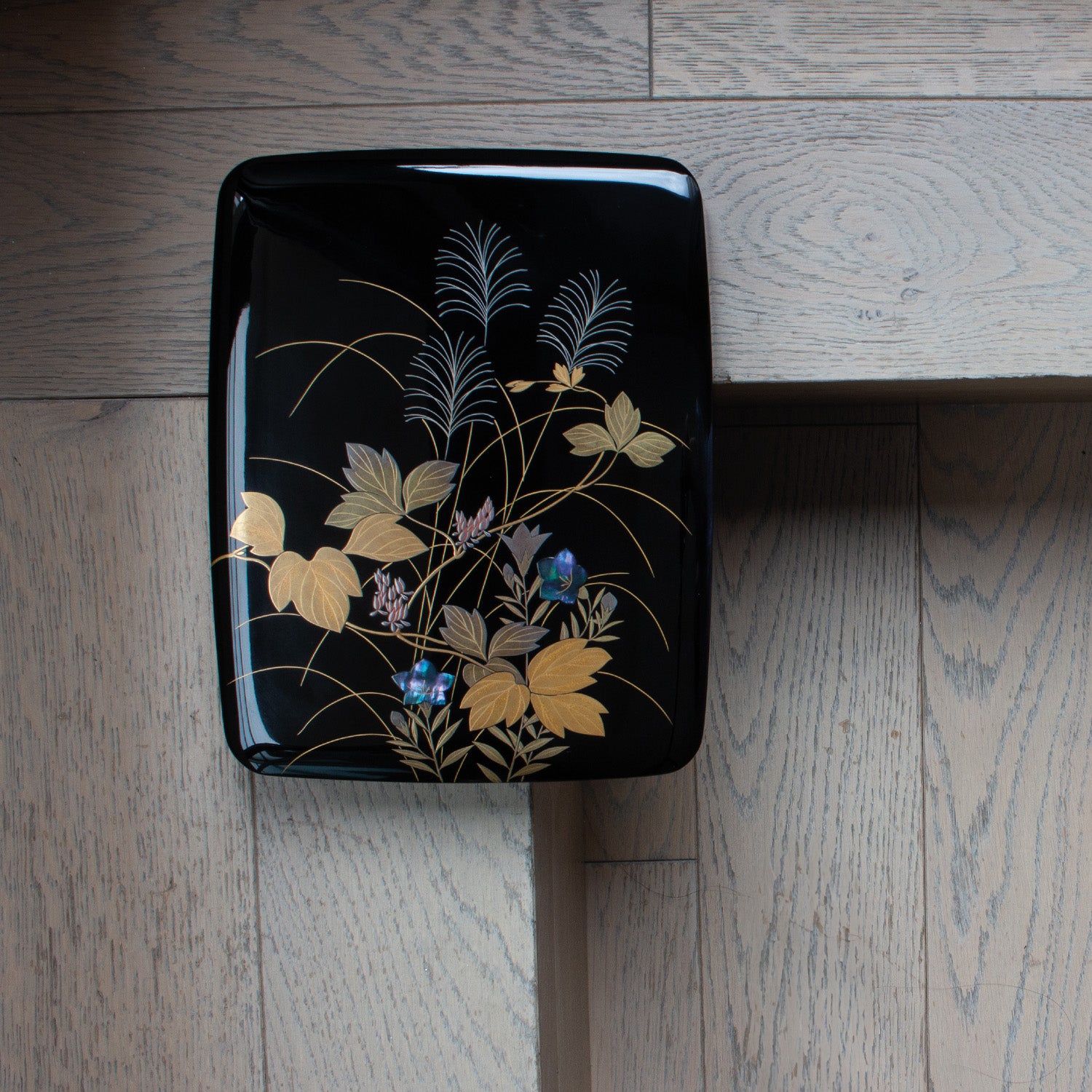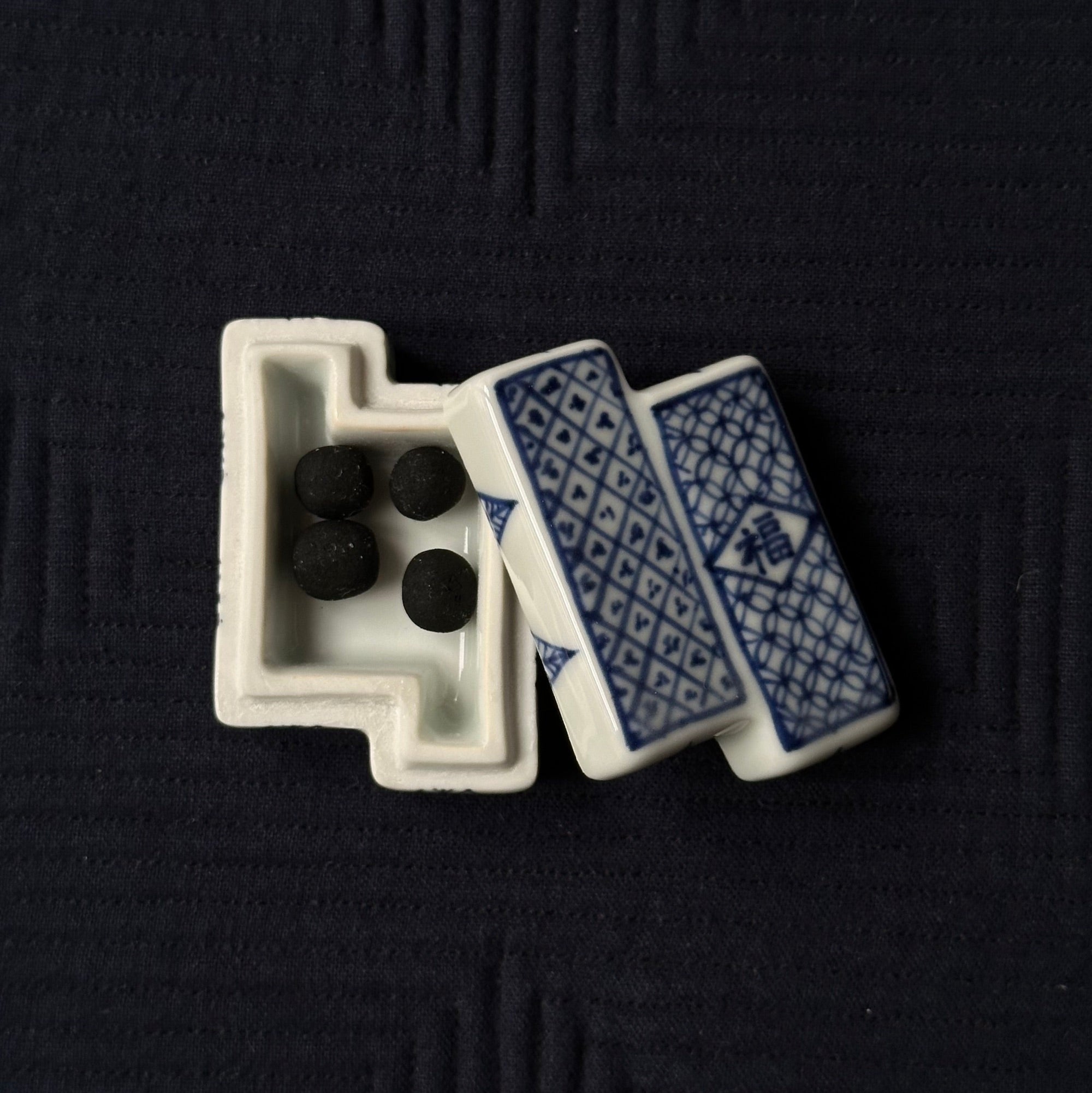



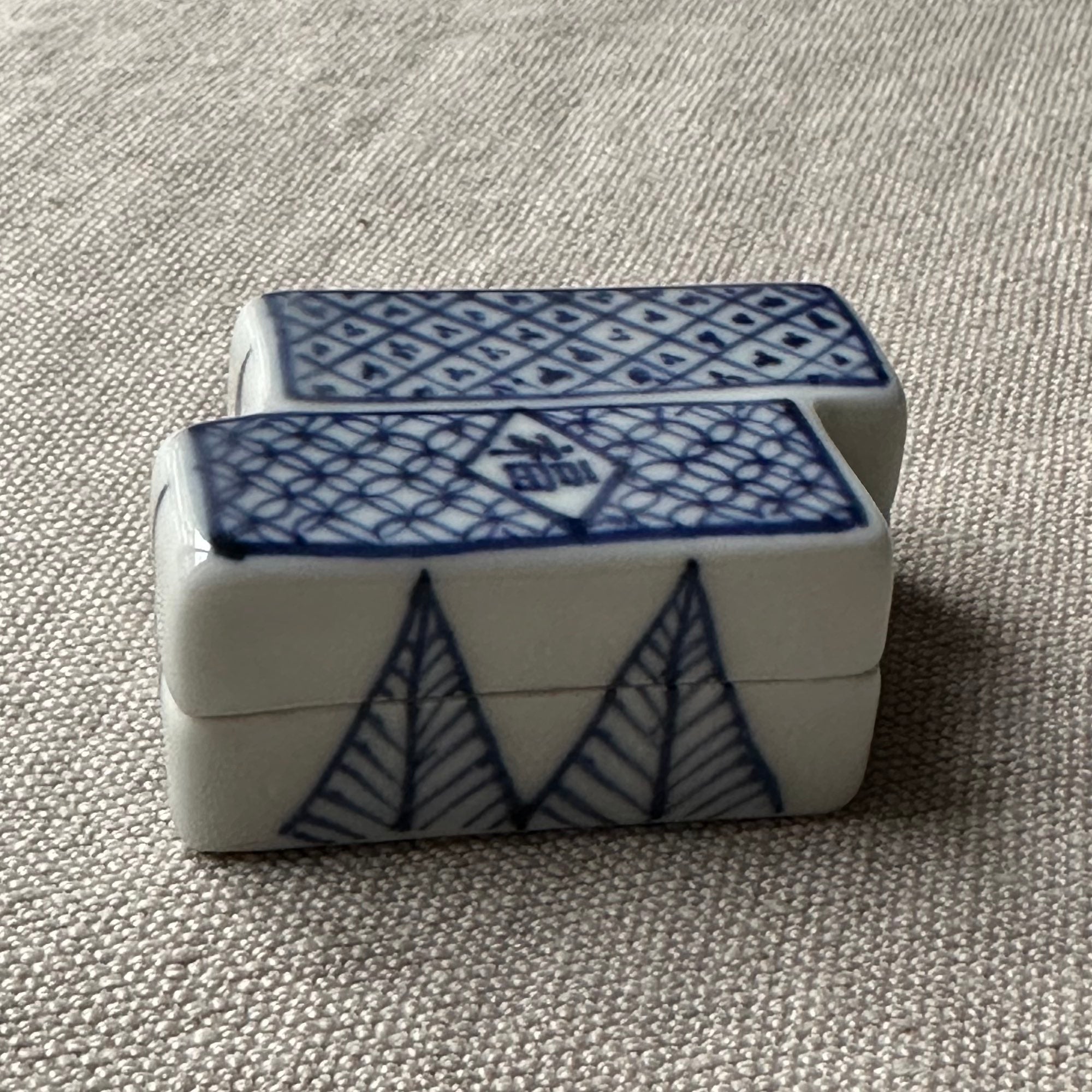
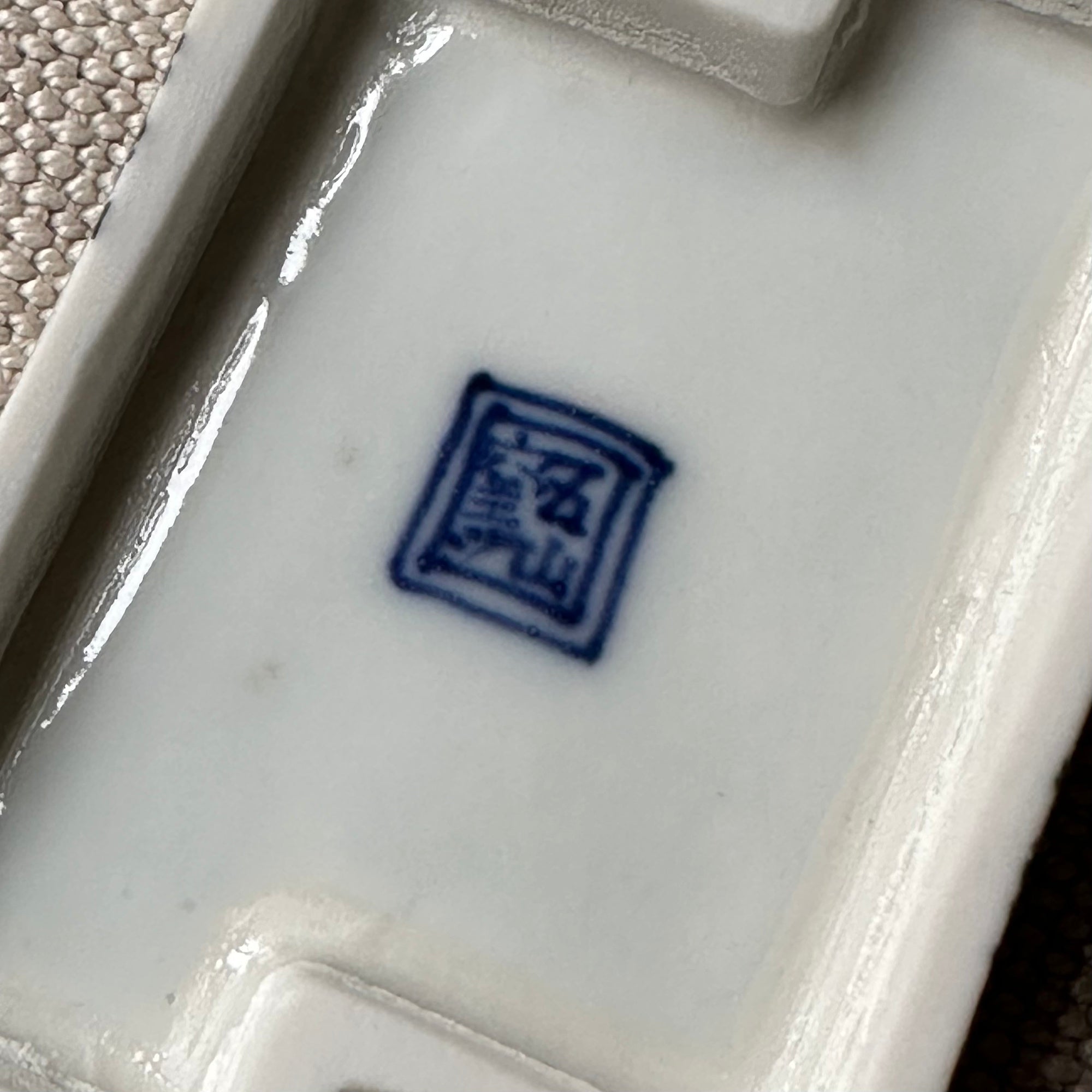
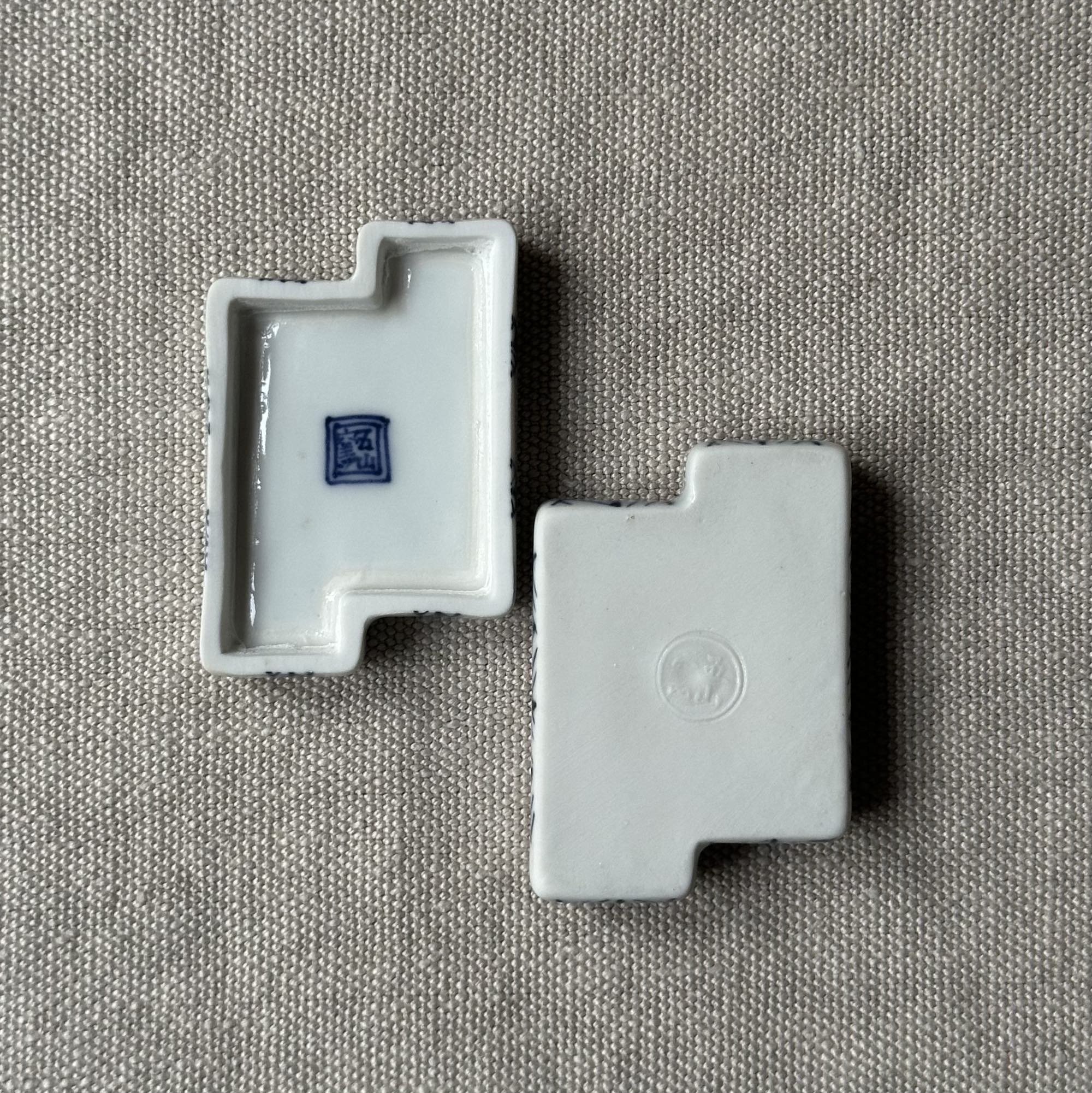
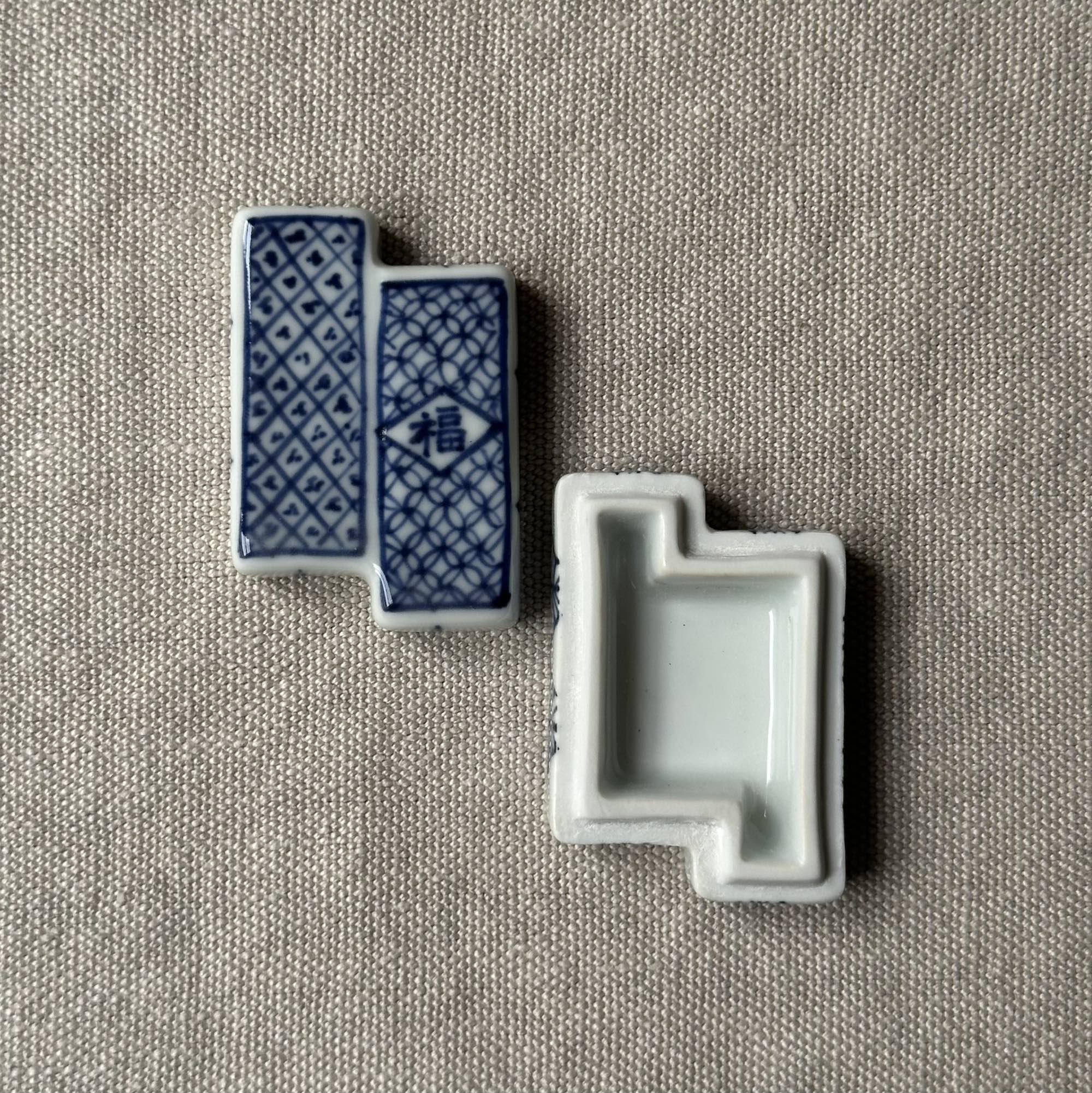
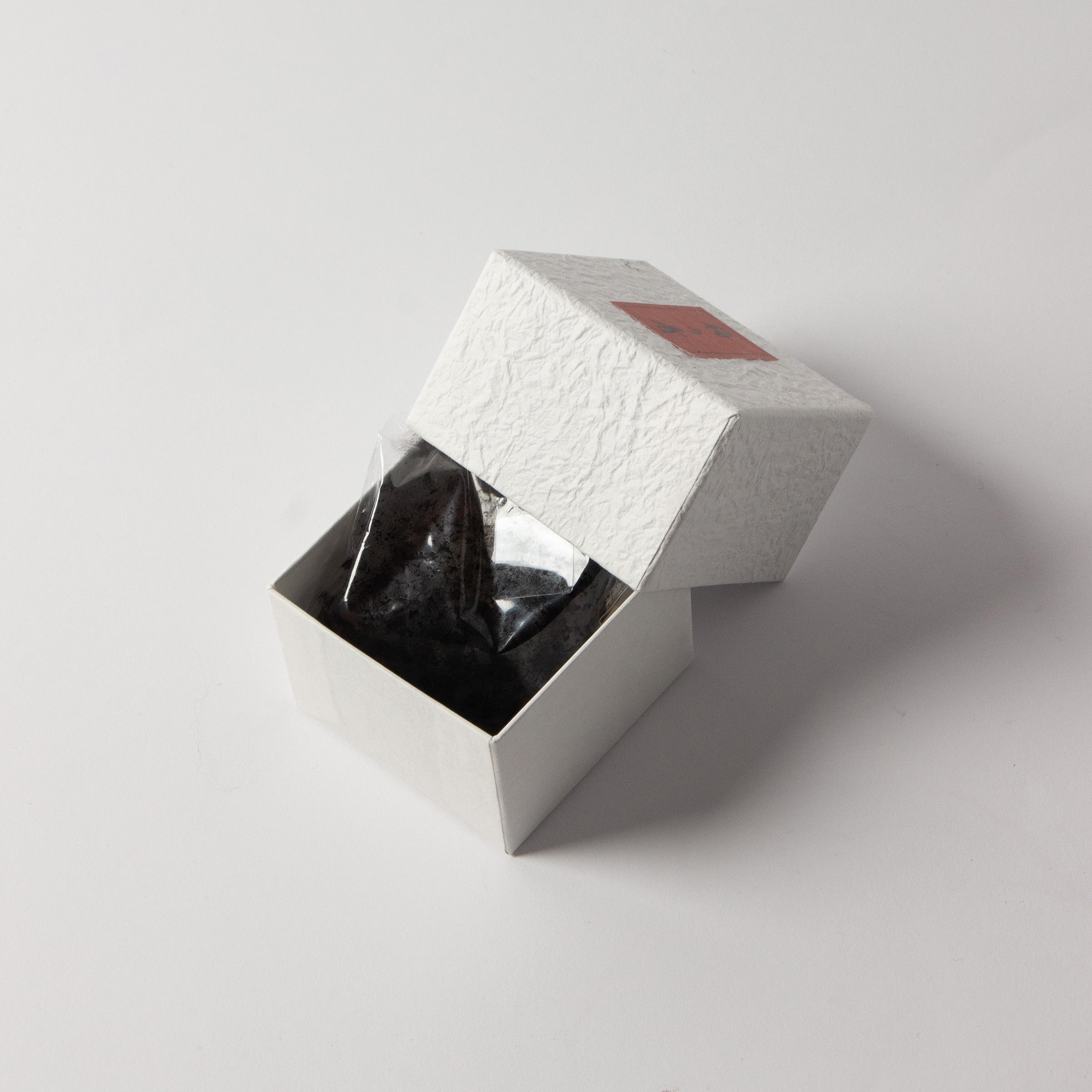
Emiko Nakamura's porcelain kōgō (sometsuke) and Japanese nerikō (incense balls)
In the art of Japanese incense, the kōgō is a small, precious box that preserves and showcases the nerikō, refined incense tablets made from precious woods and spices. Together, they embody a sensory tradition rooted in the elegance of gestures and the subtlety of fragrances, which Atelier Ikiwa was keen to celebrate by offering a carefully curated selection of superb kōgō, here designed by ceramicist Emiko Nakamura, accompanied by their nerikō boxes to introduce this little-known art.
The craftsman
Emiko Nakamura is a Kyoto-based ceramicist affiliated with Gozan Gama, a renowned workshop that perpetuates the tradition of sometsuke, a blue decoration created with cobalt gosu on porcelain. Trained in the lineage of Kyoto artisans specializing in refined pieces for chanoyu (traditional Japanese porcelain houses), she has developed a precise and demanding style, characterized by exquisitely delicate drawing and a perfect mastery of the geometric patterns inherited from Kyoto porcelain. Gozan Gama, a historic workshop in the city, is known for its exacting standards regarding the purity of the porcelain and the precision of the lines, requiring great skill in the application of gosu.
The technique and the decor
This kōgō has an architectural form, constructed by interlocking rectangular volumes to create a stepped silhouette, typical of certain Kyoto porcelain incense boxes. Made of white porcelain, it is decorated with sometsuke in cobalt gosu with geometric patterns, including the traditional shippo (" seven treasures"). In the center, a small cartouche bears the character fuku, associated with good fortune. The coin is signed at its base with a seal painted in gosu, a characteristic mark of the Gozan gama.
The nerikō
To enjoy the kōgō as intended, a box of nerikō is also included. This box contains thirty-six nerikō beads, each composed of a delicately fragrant blend based on sandalwood, crafted by one of Kyoto's oldest incense houses. To use them, place two or three in the kōgō and leave the lid slightly ajar. To stop the fragrance, simply close the lid. The nerikō beads should be replaced when they become dry. It is important to store unused nerikō in the tightly sealed plastic bag to prevent them from drying out.
To discover the art of Japanese kōgō and nerikō, we invite you to read the article we wrote on the subject, available via this link . Other kōgō are available on the site; feel free to browse our selection.
Practical information
Place of manufacture
Japan
Dimensions
Length 6cm - Width 4cm - Height 2.5cm
Weight (with box)
139g
Materials
Porcelain
Period
Heisei Era (1989-2019)
Accessories
For the kōgō: a protective box made of paulownia wood tomobako bearing the inscription of the work, the signature and the seal of the craftsman, as well as a protective cloth tomonuno bearing the seal of the craftsman, accompanied by an information document shiori.
For the nerikō: box containing thirty-six nerikō marbles.
The kōgō and nerikō will be packed together in a white cardboard box wrapped in a beautiful, skillfully knotted textile, making it an original, unique, and very elegant ready-to-give gift.
Usage tips
Place two or three nerikō beads in the kōgō, leave the lid slightly ajar to diffuse the fragrance or closed to stop diffusion. Replace the beads when they become dry and store unused beads in their airtight bag. Keep out of reach of children and animals. Do not ingest. Avoid prolonged skin contact. If discomfort or olfactory sensitivity occurs, discontinue use. Store away from heat, humidity, and direct sunlight.
DELIVERY
Delivery
Free delivery in mainland France for purchases over €200. Orders are generally dispatched within 2 working days, except in special cases, as indicated in the banner at the top of the website.
Precious objects are wrapped in a cloth tied according to the precious Korean art of pojagi. Some exceptions apply, particularly if the objects are large. Learn more >
Detailed delivery information is available via this link >
Your invoice will be sent by email
Payment methods
By card (Stripe operator): Visa, MasterCard, Discover, American Express.
Secure card payment with 3D Secure.
By PayPal, Apple Pay, Google Pay and Shop Pay
Returns and exchanges
14 days to change your mind.
Choose options
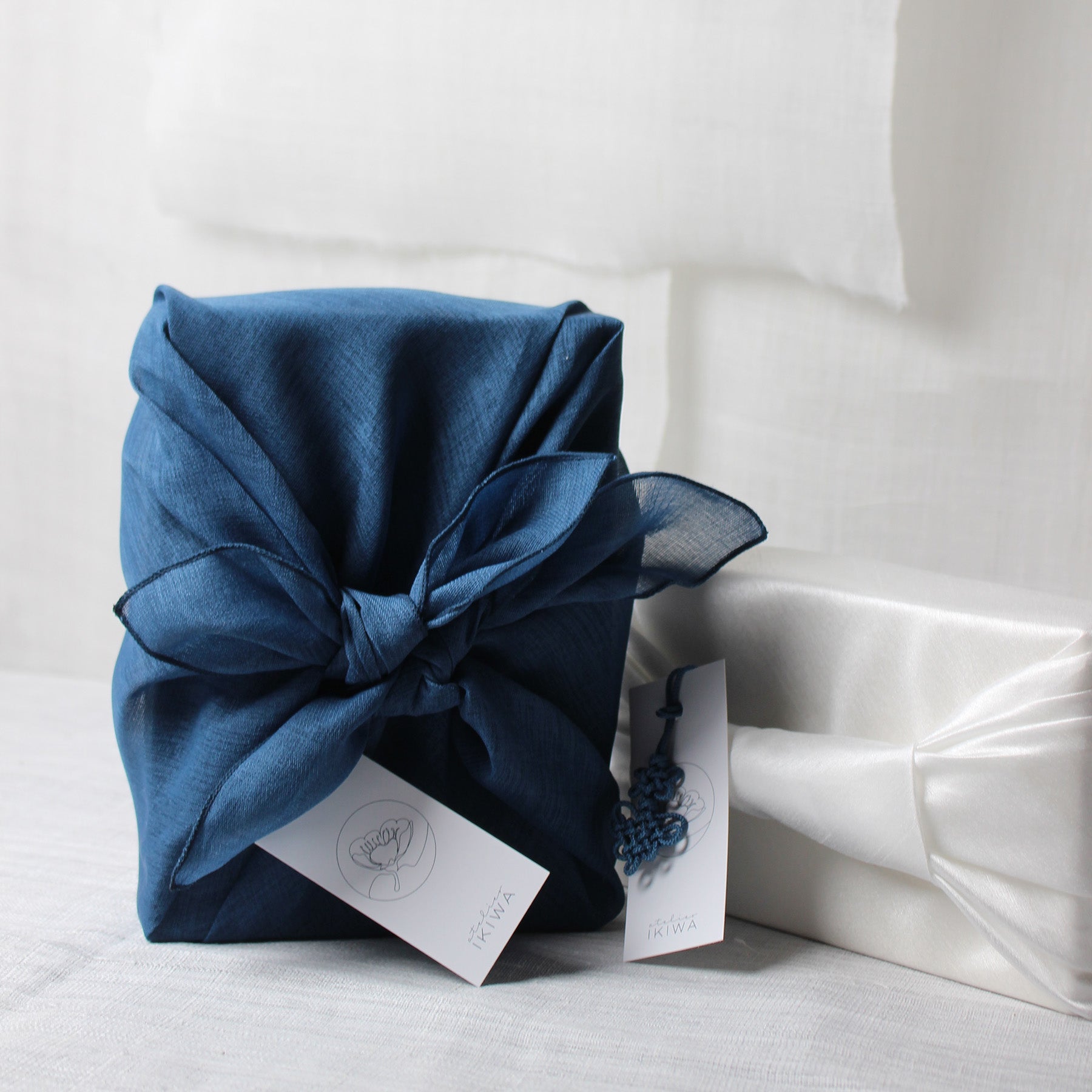
The art of wrapping
The precious objects are wrapped in a beautiful cloth beautifully tied according to the little-known art of Korean pojagi. Details and conditions >


